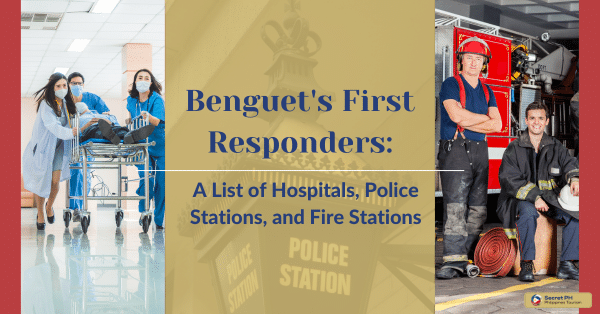Advocating for better emergency services in the Philippines is crucial to improving the response to emergencies, accidents, and disasters. Advocacy efforts can raise public awareness, pressure decision-makers to allocate more resources, and improve training and equipment. This can ultimately save lives and improve the quality of life for citizens.
This is why it is so important for citizens from all walks of life to join together and advocate for better emergency services in the Philippines. In this blog post, we will discuss what advocacy efforts are being done in the country, how citizens can contribute to the cause, and how improved emergency services can benefit all Filipinos. Let’s get started!

State of Emergency Services in the Philippines
The State of Emergency Services in the Philippines is a concern. Natural disasters are prevalent in the country. Emergency services are essential for responding to emergencies. The Philippine Government has recognized the importance of emergency services, as well as seeking out ways to fund and utilize aid initiatives.
Existing public information systems have been adapted to include both warning mechanisms and rescue coordination. National disaster coordinating councils have been formed in several provinces to better coordinate relief. While more effort is needed to improve disaster preparedness and readiness; progress is being made toward an improved infrastructure that will help mitigate the impact of future disasters.

Challenges faced by emergency responders in the Philippines
Emergency responders in the Philippines face several challenging obstacles on their mission to provide aid and relief. In addition to hazardous environmental factors such as landslides, earthquakes, and tsunamis; responders must also grapple with challenges. While progress is being made in certain areas, much more cooperation is needed from both government agencies and non-governmental organizations to improve recovery operations for emergency responders.
Limited Resources and Funding
Emergency responders in the Philippines face daunting challenges every day. One of these challenges is limited resources and funding. Emergency responders often struggle to acquire the critical supplies needed for their operations. This includes fuel, vehicles, and medical supplies. To fully utilize those precious few funds, often times emergency responders are forced to pool resources for specialized equipment purchases and repairs. The majority of the funds that might become available don’t always cover all the necessary items.

Inadequate Training and Education
Inadequate training and education often present a challenge to emergency responders. For example, fire fighters have limited access to up-to-date equipment and modern techniques. It could be used during an emergency. As a result, they don’t always feel prepared to respond to emergencies.
Lack of resources makes it difficult for emergency responders to receive proper training and updates about safety standards. The training is often expensive and time consuming. Inadequate training can also lead to feelings of insecurity among workers. There is a dire need for an organized and comprehensive system aimed at equipping these first responders with relevant knowledge and skills. This will help them better serve the people.

Outdated Equipment and Technology
Emergency responders face a number of challenges when it comes to outdated equipment and technology. While the government has made attempts to equip their responders with modern equipment, limited funds mean much of the existing infrastructure. As technology is constantly evolving, emergency responders often find themselves on the back foot due to a lack of appropriate resources.
This means that during an incident or disaster, response times may be considerably longer than would be expected. Poorly maintained equipment is one of the biggest problems faced by Philippine emergency services. They are regularly exposed to risk due to unreliable and obsolete equipment. It can be extremely difficult for responders to do their jobs effectively and efficiently.
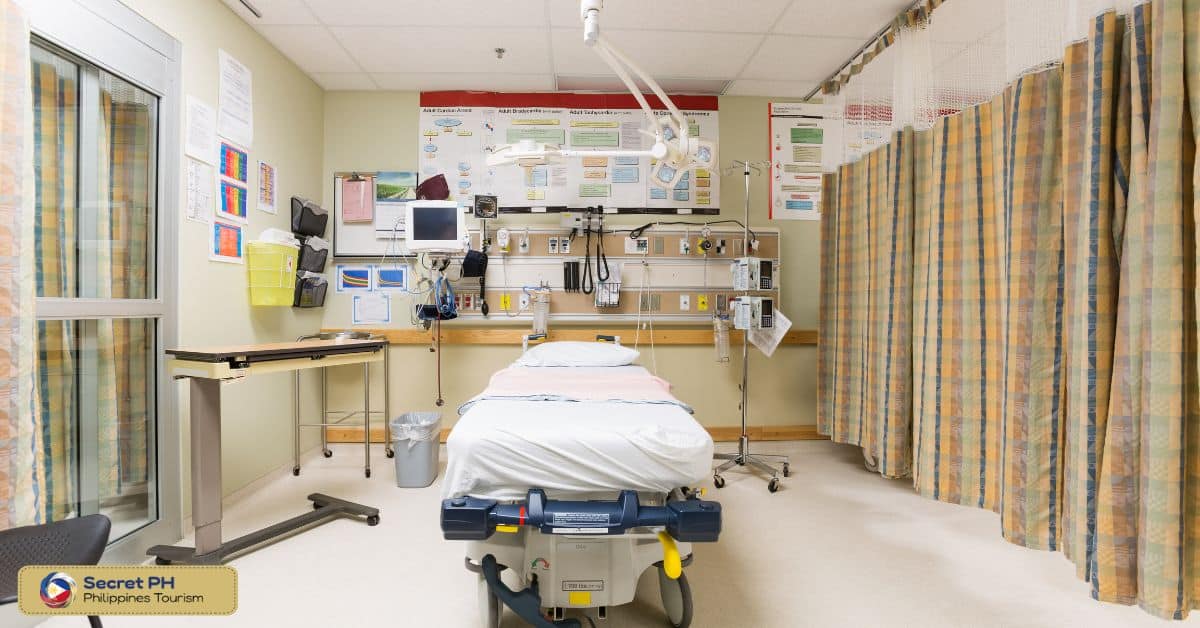
Advocating for Better Emergency Services
The Philippines is working towards better emergency services. Advocating for more robust and comprehensive emergency services is an effort to save lives and spread well-being. By moving forward with this movement; Philippines can bring its emergency services up-to-date and create a system of care that will benefit many generations.
Importance of advocacy in improving emergency services
The Philippines has a variety of dangerous disaster scenarios that require high quality emergency services. Without the help of advocacy groups, their ability to respond efficiently is severely hampered. Through increased awareness with regards to the importance of preparedness, advocating for better emergency services can indeed be effective in Philippines.

- Increased Awareness: Advocacy efforts can raise public awareness about the importance of emergency services in the Philippines. This can encourage citizens to demand better services and put pressure on decision-makers to allocate more resources and funding.
- Improved Policies and Regulations: Advocacy efforts can influence policy-making and regulations related to emergency services. Advocates can push for better regulations on equipment and technology, training and education, and protocols for responding to emergencies.
- Increased Funding: Advocacy can lead to increased funding for emergency services. Decision-makers can be encouraged to allocate more funds towards improving equipment and training, and to establish emergency response systems that can handle natural disasters and other emergencies.
- Collaboration and Partnership: Advocacy can help to create partnerships and collaborations between different stakeholders in emergency services. Advocates can bring together government agencies, non-government organizations, and private entities to work together towards improving emergency services in the Philippines.
- Improved Response and Recovery: Advocacy efforts can lead to improved emergency response and recovery. With better equipment, training, and protocols, emergency responders can be better equipped to handle emergencies, reducing response times and ultimately saving more lives.
Role of government for better emergency services
The Philippines faces a wide range of challenges when it comes to providing adequate emergency services. Making improvements in this area requires the involvement of both private and public entities. Governments have a critical role to play in advocating for better emergency services. They are well-positioned to introduce policy reforms, ensure compliance with service standards, and coordinate inter-agency operations. Here are some role of the government for better emergency services:
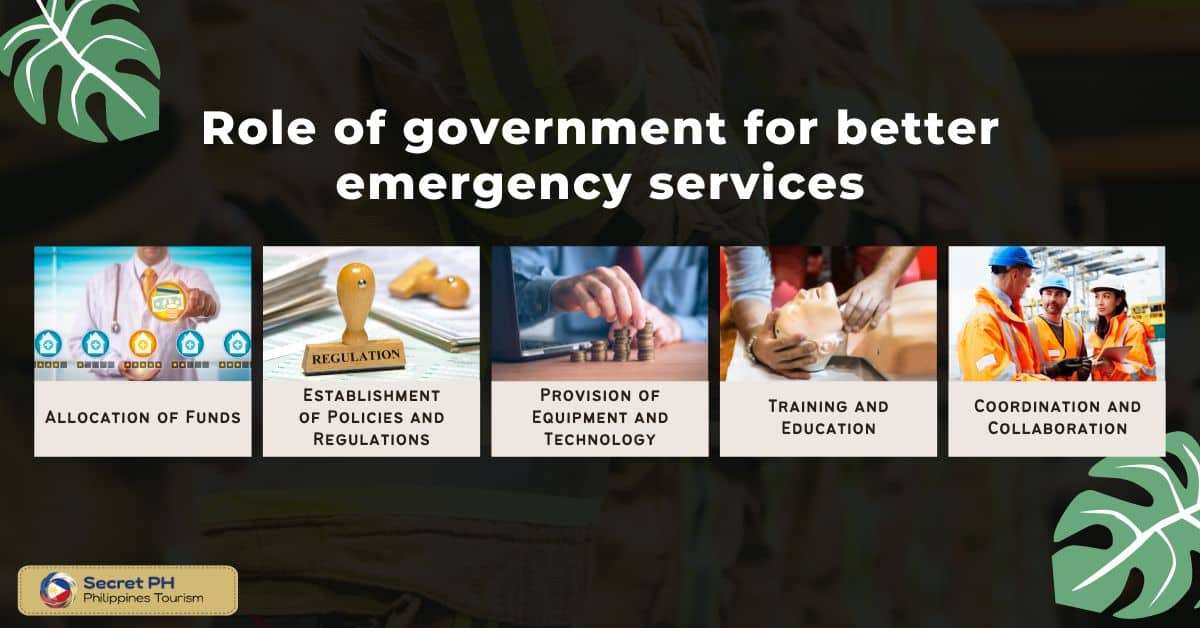
- Allocation of Funds: The government plays a crucial role in allocating funds for emergency services. It is responsible for ensuring that emergency services have adequate resources and funding to operate effectively.
- Establishment of Policies and Regulations: The government is responsible for creating policies and regulations that ensure the safety and well-being of citizens during emergencies. It establishes protocols for emergency response and enforces regulations on equipment, technology, and training.
- Provision of Equipment and Technology: The government provides emergency services with equipment and technology that they need to operate effectively. This includes vehicles, communication systems, and medical equipment.
- Training and Education: The government provides emergency responders with the necessary training and education to respond to emergencies effectively. This includes disaster preparedness training, first aid, and other specialized training.
- Coordination and Collaboration: The government is responsible for coordinating and collaborating with other agencies and organizations to ensure effective emergency response. This includes working with non-government organizations, private entities, and other government agencies.
Role of non-government for better emergency services
The Philippines is a dynamic country with a rapidly increasing population. The Philippines still faces significant problems related to emergency services. Non-government organizations are playing an important role in advocating for better emergency services. All Filipino citizens are provided with swift and adequate care when they need it most. Here are some role of the non-government for better emergency services:

- Supplemental Funding: Non-government organizations can provide additional funding for emergency services, which can help to supplement the government’s funding and resources.
- Community Outreach and Education: Non-government organizations can educate communities on the importance of emergency services and provide information on how to respond to emergencies. This can help to improve emergency response times and save lives.
- Volunteer Support: Non-government organizations can provide volunteers to support emergency services. Volunteers can help with various tasks, including search and rescue, medical assistance, and disaster response.
- Equipment and Technology: Non-government organizations can provide equipment and technology to emergency services that they may not have access to otherwise. This can include communication systems, medical equipment, and other specialized equipment.
- Advocacy and Lobbying: Non-government organizations can advocate for better emergency services by lobbying decision-makers to allocate more resources and funding to emergency services. They can also raise awareness about the importance of emergency services and put pressure on decision-makers to improve emergency response times.
Improving Emergency Services in the Philippines
Improving emergency services in the Philippines has become a priority for many people. With the problems of natural disasters, such as typhoons and earthquakes, providing fast, efficient service to those in need is critical. These actions are aimed at creating a more organized response system. With such initiatives already underway, citizens of the Philippines can hope for a brighter future with improved emergency services when faced with a crisis.
Training and education of emergency responders
Training and education play a key role in the quality of emergency services in the Philippines. In developing the skills of emergency personnel, educational programs have been established which provide theoretical understanding for topics such as health protection, hazard preparedness and response, or resource management. These programs can be undertaken onsite at specialized training locations or through distance learning formats.
On-the-job training is also an important factor, as it allows emergency responders to constantly assess their skills and knowledge in real world situations. By equipping responders with new skills while continuously improving existing ones through progress testing, they can attend to any crisis with more confidence and assurance that their decisions are informed and appropriate. Regular drills offer further practice in many areas so that responders will be comfortable using the tools available to them when attending to an incident.
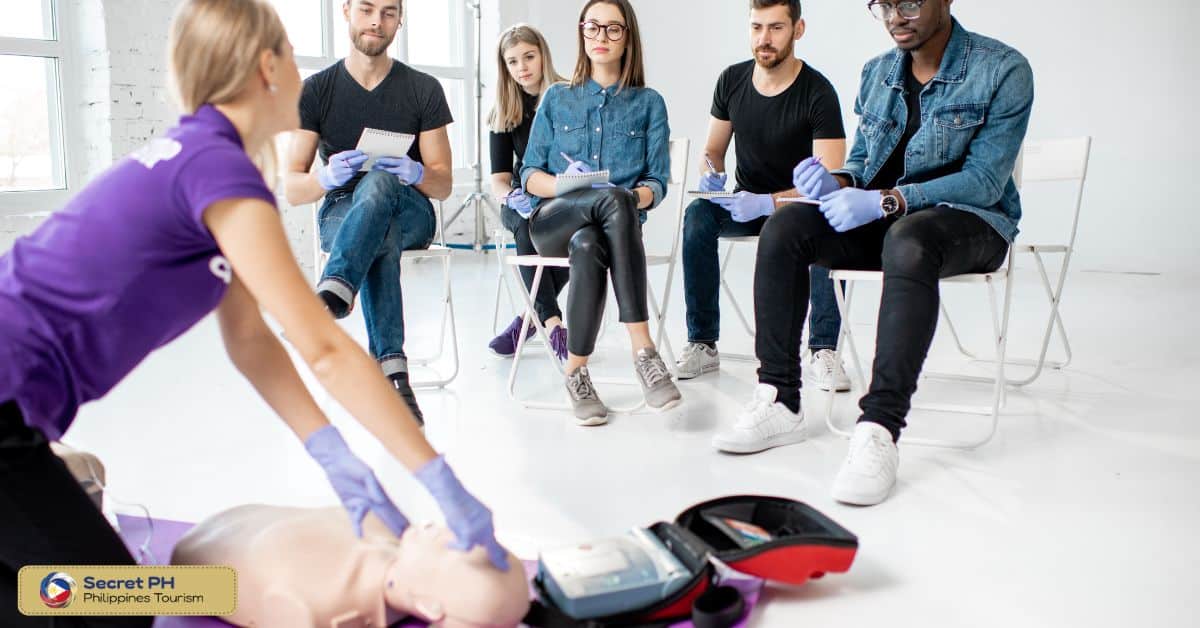
Investment in emergency equipment and technology
The Philippine government is investing heavily in the latest gear and technology to improve emergency services. This includes both protective gear such as bulletproof vests and masks, wayfinding systems for agencies involved in rescue operations, healthcare technology such as cloud-based hospital patient tracking systems and advanced medical equipment.
In addition, there is a strong emphasis being placed on training and development for all emergency personnel so that they can better handle any crisis situation. With these enactments in place, the people of Philippines are sure to see drastic improvements in their response time to emergencies.
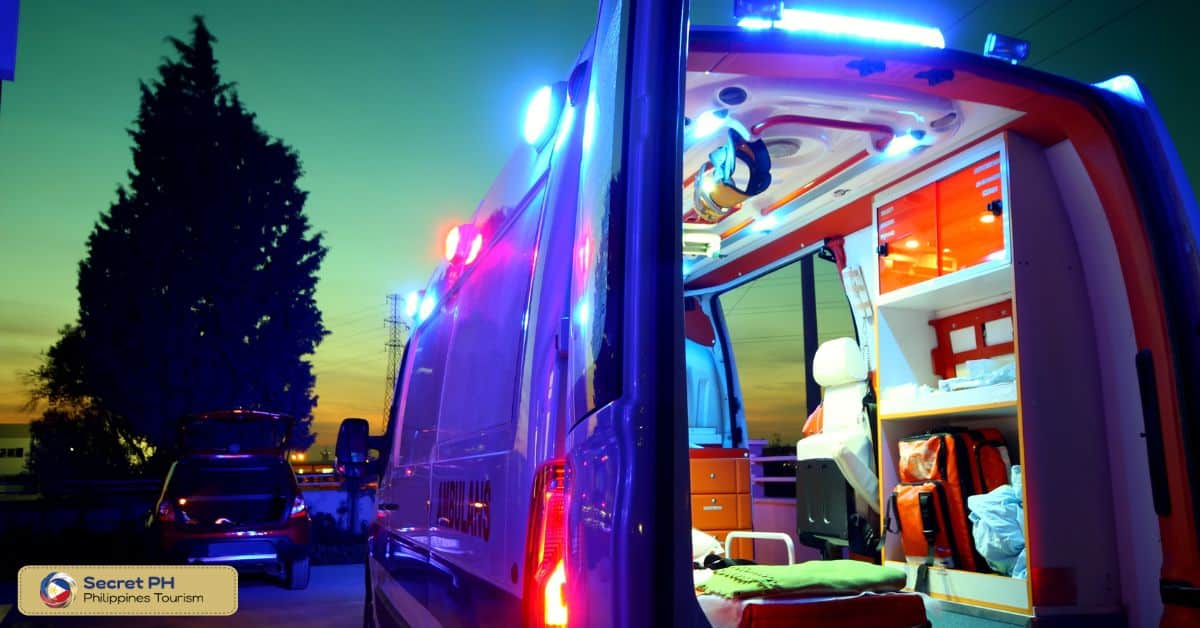
Collaboration between government and private organizations
The collaboration between the government and private organizations has resulted in significant improvements to emergency services in the Philippines. Access to better medical care, timely responses from responders, disaster preparedness and prevention initiatives.
As an example of the improved response times, both government and private organizations have provided dedicated crews. They monitor weather conditions and provide early warnings before major storms hit communities. This kind of collaboration has proven to be an effective way to ensure safety against natural disasters.

Community involvement and awareness
Community involvement and awareness is key to improving emergency services in the Philippines. Through spreading knowledge, residents can be better-equipped to handle emergencies when they arise. This can involve assisting with first-aid measures or being alert to instantaneously contact the appropriate personnel.
Moreover, centralizing communication is also paramount since it enables responders to deploy fast and act decisively. Through continuous education, more stakeholders will be able to use such conveniences correctly and constructively within their localities. Such proactive measures facilitate the development of understanding of how people can lend a helpful hand when necessary.
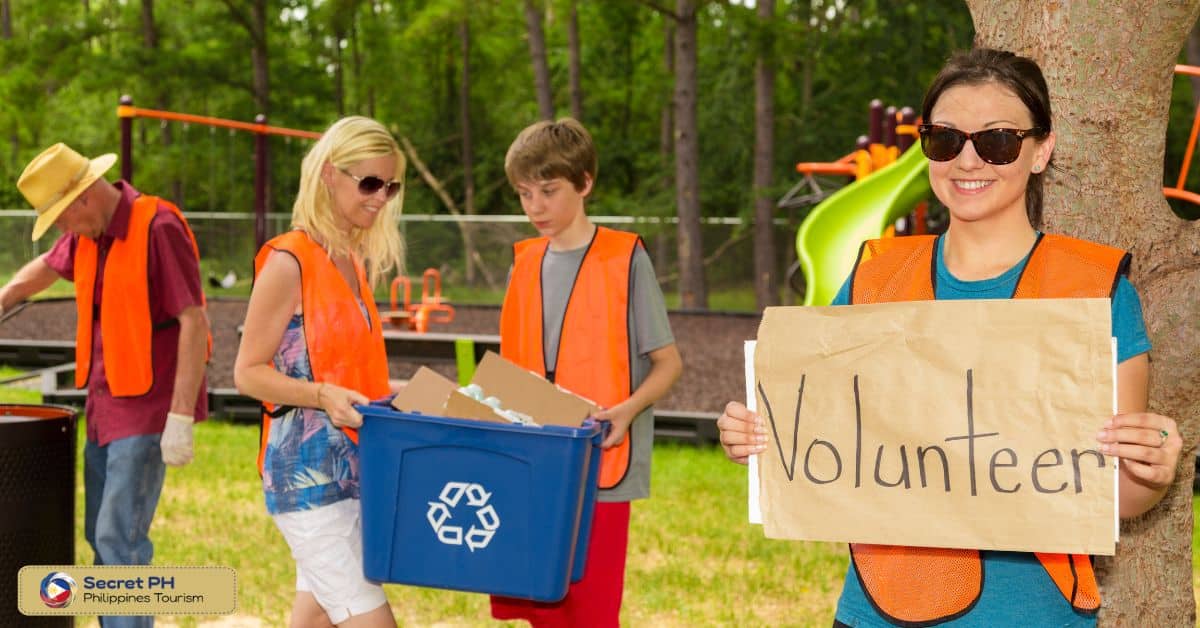
In Conclusion
Advocating for better emergency service in the Philippines is an important step towards achieving the goals of creating a more safe and secure society. Making sure the necessary standards of safety, security and effectiveness that modern emergency services needed. The citizens can have greater confidence and access to help when disaster strikes.
Communities may also be able to recognize their own strengths and weaknesses and take steps to better their emergency preparedness as needed. Overall, improved emergency services can bring peace of mind to all those who live in the Philippines.



